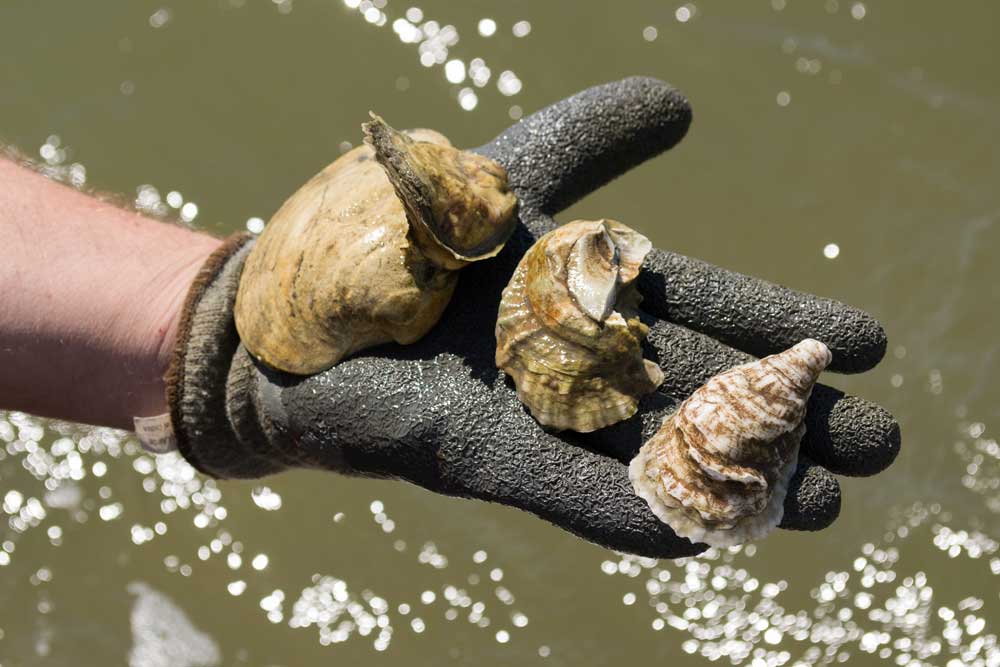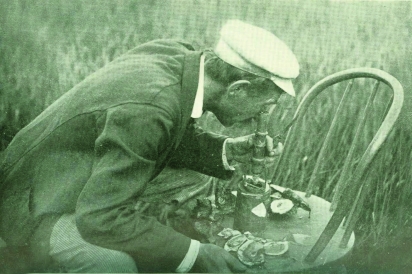THE OYSTER FARMERS
New documentary charts the renaissance
The Barnegat Bay is a muse who holds her secrets close, reserved for the initiated. Even locals can miss the stories submerged within her depths. Case in point: A few years ago, Long Beach Island resident Corinne Ruff was walking the shoreline and got to wondering. Where had all of the oysters gone?
A century back, she learned, a thriving industry lined pockets, filled plates and supported a vast reef system and healthy Barnegat Bay. As on the Delaware, overharvesting and disease spelled the end, not just of the oyster trade, but of the baymen’s culture—or so it seemed. As Ruff dove deeper, she came to discover the modern-day baymen (and women) guiding a resurgence.
Their stories are told in a new documentary to premier this summer: The Oyster Farmers.
Directed by Ruff, a commercial airline pilot and producer of the film Landfall: The Eyes of Sandy, and produced in partnership with environmentalist Angela Andersen and Oak Leaf Media, the film charts the new rise of our favorite bivalve on the Atlantic Coast. Jetty Rock Foundation, the non-profit wing of the local active-lifestyle brand, is the fiscal sponsor. “I realized that this isn’t a story about the plentiful oyster that used to be here and now they’re gone,” Ruff says. “That’s the beginning. The continuation is that the oysters are coming back, and the baymen of long ago are now oyster farmers and aquaculturists.”
It’s a history that has played out before. Rutgers researcher Harold H. Haskin launched his career participating in oyster research on the Tuckerton Creek. He is credited with saving the Eastern oyster with a disease-resistant stock developed in the wake of the 1957 MSX epidemic.
“Harold Haskin worked with Thurlow Nelson at the mouth of the Tuckerton Creek on a houseboat called The Cynthia,” Ruff says. Thurlow Nelson was the son of Julius Nelson, who began researching in the 1880s. The Nelsons were doing the very first oyster studies in America—ever, Ruff says. The Nelsons focused on experimental breeding and saw the oysterman as a farmer, planting and harvesting seed. Opened in 1901, their Tuckerton facility was the state’s first Oyster Investigation Laboratory. “Farmers today use that same data,” Ruff says of the Nelsons’ research. “For water temperature, for salinity. Those very studies are what people use up and down the Eastern Seaboard.”
Haskin was the Nelsons’ protégé. “He was a sponge,” Ruff said. It’s a heritage today’s hard-working oyster farmers revere. “I want to see the story of the oyster told,” says Matt Gregg of Barnegat Oyster Collective, who is featured in the film. “I’ve read every book I can on the history of the Barnegat Bay, but a lot of that history is locked up in the heads of old-timers.”
The documentary, shot over two years, reveals such tales, starting with the history of oysters and baymen in the Barnegat Bay while highlighting a new generation that is aiming to restore not just the industry, but the very waters on which it relies. Together, farmers from Forty North, Parson’s Seafood and Maxwell’s Shellfish show the diversity and determination of those who are growing business opportunities, building reefs and reviving estuaries in the process. The hope is that viewers will watch the film, reconnect to the region’s maritime roots and become a force for the bay’s revitalization going forward.
For an environmental perspective, Ruff tapped Andersen as producer— or as she calls her, “The Bay Queen.” A former South Jersey director for the Littoral Society, Andersen is the sustainability coordinator for Long Beach Township, and views her work as an environmental ministry. “Bivalves and the shellfish play a critical role in filtration, stabilization and the creation of micro-ecosystems,” Andersen says. “It’s not just about aquaculture, but reef development and the relationship formed by having aquaculture and a reef in a system.” In other words, sustainability.
“It’s the same concept of a farmer and soil and the earth, putting nutrients and life back into it to give new product,” Andersen says. “It’s about economic integrity, environmental quality and community health.” She is heartened by the recent addition of structured aquaculture to the state’s economic development plan, and hopes to see more waters opened to farming. Taking a big-picture view, Ruff and Andersen see great potential in emerging reef-development projects. (See page 40, “Building Reefs, Business and Community”) For filmmaker and fellow local Brendan Walsh of Oak Leaf Media, creating the film fostered a changed perspective on the ecological history of his own back yard—a reaction he hopes to elicit from others. “If someone said, ‘well what do we do after watching this film?’’’
“Eat oysters,” Andersen says.
“Exactly,” Walsh continues. “Eat oysters. Eat local food. If you’re sitting on your cellphone at the dinner table, like we shouldn’t be, investigate where you’re getting your food from.”
If Ruff has her way, people will then get up and reconnect to their coastal roots, whether by exploring the bay’s waters, experiencing oyster farms or supporting reef restoration. With that connection made, they are optimistic that Barnegat Bay’s submerged magic and beauty will be protected for generations to come.
A first cut of The Oyster Farmers was featured at the Lighthouse International Film Festival on Long Beach Island in June. Screenings of the film are scheduled for:
• July 21: Stafford Township Arts Center, with a farmer and crew panel to follow
• July 26: Film-and-sail event aboard the A.J. Meerwald at Long Beach Island Foundation for the Arts and Sciences
• Aug. 15: Screening at the Sink R’ Swim courtyard in Beach Haven
Tickets, details and information about a planned video-on-demand release for fall can be found at jettylife.com/pages/the-oyster-farmers-film.






